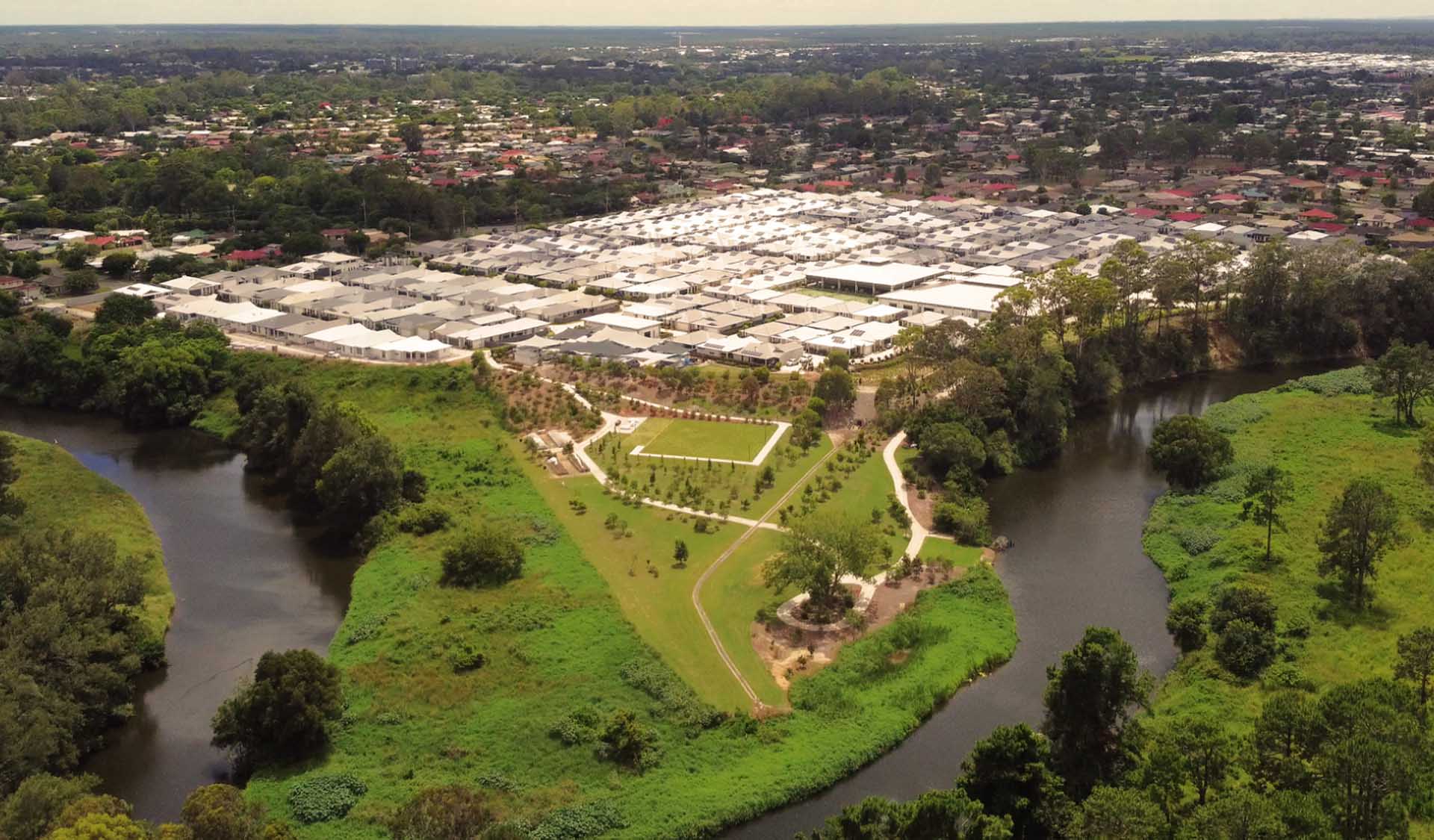Free and clear – Protecting nature by design

There is a remarkable system that exists under the gardens and the roads around Living Gems resorts.

It operates silently and without fuss but plays an important role in protecting our environment. It’s known as stormwater harvesting and it ensures runoff that eventually rejoins the waterways is free from pollutants.
At Living Gems Caboolture Riverfront, the only sign of this special system above ground is a garden on the southwestern corner of the site with grassy-style plants called a bioretention system.
“Bioretention systems provide significant sediment and nutrient removal from stormwater,” said Fred Jedrasiak, head of Living Gems’ in-house design team.
“It utilises a sandy loam soil to filter runoff. Sediment particles and suspended solids are trapped in the vegetation and the surface of the bioretention basin. Microorganisms and vegetation remove dissolved nutrients, such as nitrogen and phosphorus.”
While nitrogen and phosphorus are important plant nutrients, it is possible to have too much of a good thing. When that happens, waterways can become clogged with algae which affects aquatic plants and animals that live in rivers and streams.
Comprehensive stormwater detention and harvesting systems like the ones used in Living Gems resorts are designed to minimise the impact on the surrounding environment.
Plants used in bioretention basins are sedges including Carex appressa, Ficinia nodosa, and Lepidosperma laterale. They are preferred to other types of plants as taller, denser vegetation provides better water treatment.
Then underground stormwater systems take the water runoff that comes off roads and filters it before it goes back into the waterways.
Living Gems’ civil design team invests a great deal of time at each location to understand the topography of the site and develop a stormwater and waterways management plan to ensure water runoff meets environmental requirements.
“There is a lot of work which goes into calculating the size of stormwater treatment systems,” said Frank. “The most common is the Model for Urban Stormwater Improvement Conceptualisation (MUSIC) which allows us to work out the types and number of these stormwater filtration systems required across the resort.
“It’s quite a complex set of calculations which is why specialist software is used.”
The remarkable stormwater system receives regular checks throughout the year to ensure everything is working as intended and the maintenance management plan is reviewed each year to monitor changes in the vegetation, the presence of fauna, as well as its operational efficiency.
So, the next time when you’re watching the rain fall, just give a little thought to what happens to all that water before it reaches the river.
Parts of a bioretention system
- A basin design allows evaporation of water while the plants
naturally filter out excess nutrients. - Beneath the planting is a filter media – typically a sandy loam
which transitions to a layer of coarse sand and then gravel
before reaching the native soil. - A perforated pipe takes the naturally filtered water to the
waterway.







